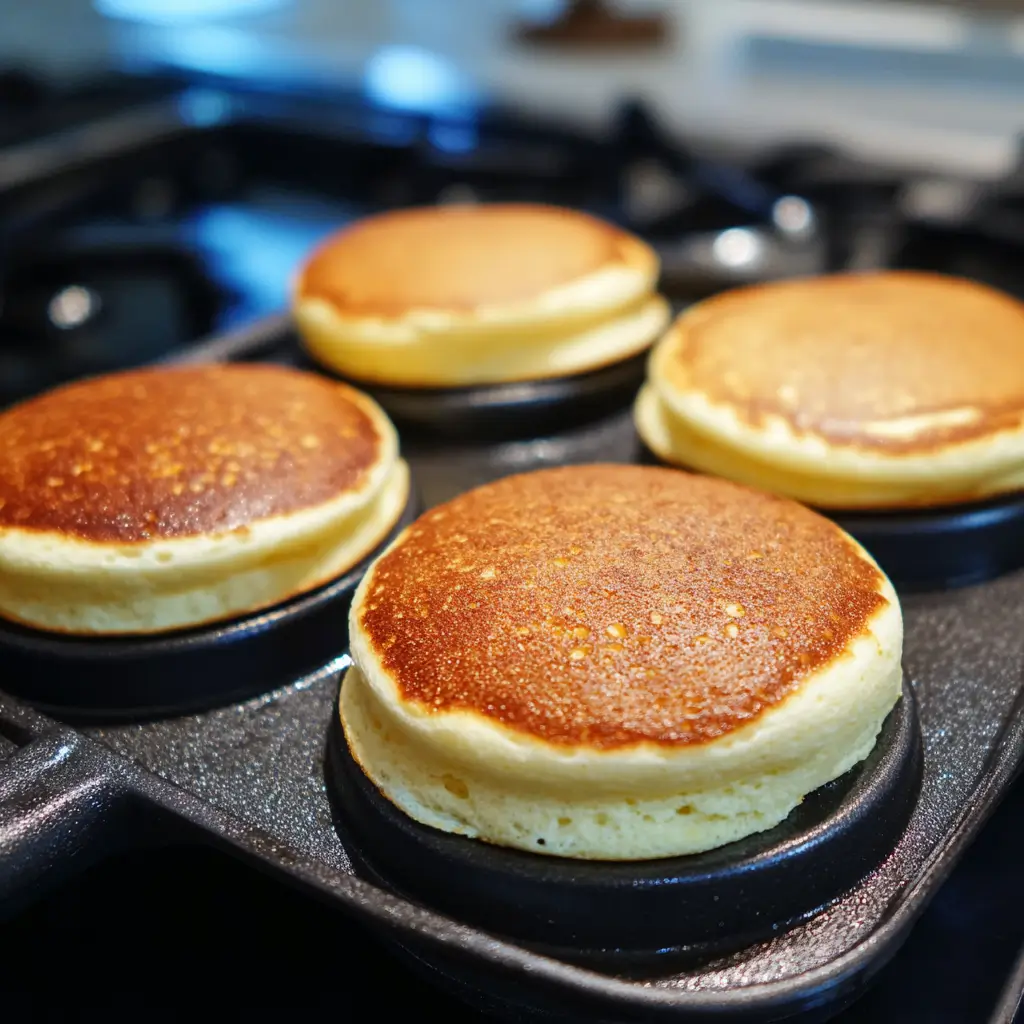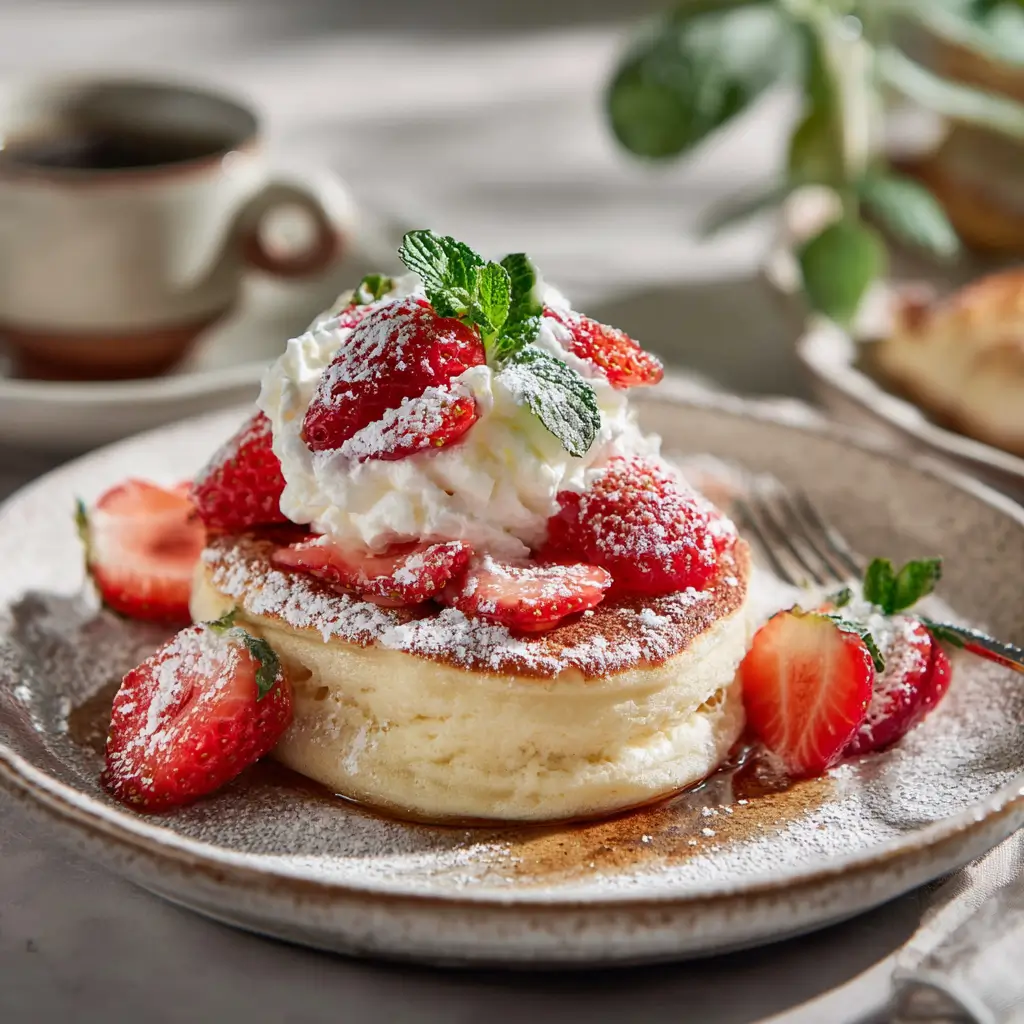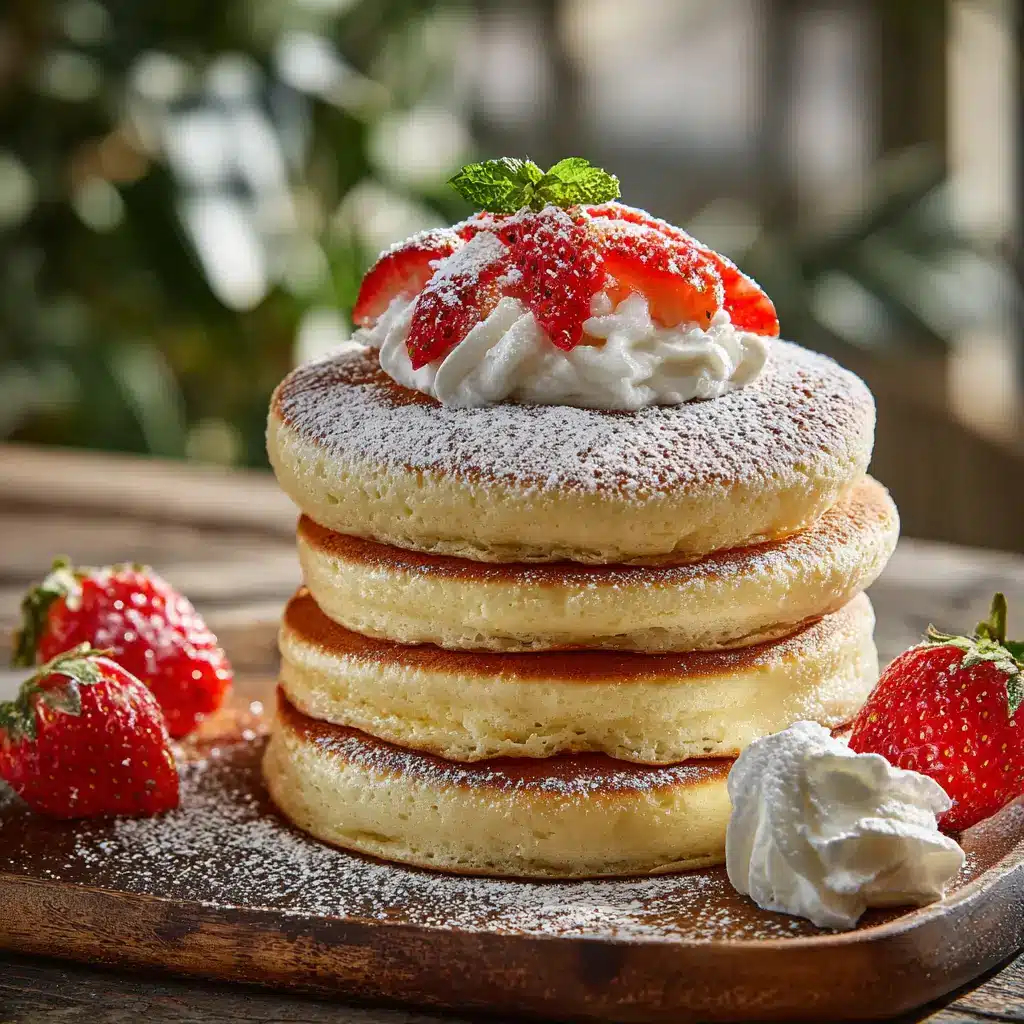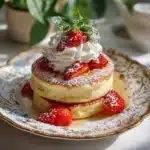Craving a breakfast that feels like a cloud on your plate? The Japanese Fluffy Pancakes Recipe has taken the world by storm, transforming a humble pancake into a soft, towering treat that jiggles with every touch. Unlike regular pancakes, these delicate stacks are airy, light, and gently sweet, offering a melt-in-your-mouth experience. In this guide, I’ll show you how to create them perfectly at home, sharing secrets for getting that gorgeous height and wobble. Whether you’re new to this Japanese classic or determined to perfect your technique, this step-by-step recipe makes achieving fluffy pancakes completely possible. Let’s dive into the magic!
Hi, I’m Beck. My love for cooking began in my grandmother’s kitchen, where meals were crafted with simple ingredients but always felt extraordinary. One of the joys she passed on to me was how food can lift your mood and bring moments of pure happiness. That’s why when I first discovered Japanese fluffy pancakes, I felt the same wonder I’d felt as a child. Their soft, airy texture and gentle sweetness felt like biting into a cloud. I knew I had to recreate them at home, not just for myself but to share that feeling with others. Many people think these gorgeous pancakes are difficult or only for fancy cafés, but they’re completely achievable in your own kitchen. Today, I’m excited to guide you through every step so you can enjoy a stack of these magical pancakes and bring a little extra joy to your mornings.
Table of Contents
Table of Contents
Why You’ll Love This Recipe
- These pancakes are incredibly light and airy, with a soft, jiggly texture that’s unforgettable.
- The recipe uses everyday ingredients and doesn’t require special tools beyond basic kitchen staples.
- Perfect for impressing guests or treating yourself to a luxurious breakfast at home.
- The delicate sweetness pairs beautifully with fresh fruit, whipped cream, or a simple dusting of powdered sugar.
- Step-by-step instructions make it easy, even for beginners, to master this delightful Japanese fluffy pancakes recipe.
Ingredients List

- Eggs – The key to creating volume and stability in the batter, especially the whipped egg whites.
- Milk – Adds moisture and smoothness to the batter.
- Cake Flour – Gives the pancakes a delicate, tender crumb thanks to its lower protein content.
- Baking Powder – Helps the pancakes rise and stay fluffy.
- Sugar – Sweetens the batter and helps stabilize the egg whites.
- Vanilla Extract – Adds warm, aromatic flavor to the pancakes.
- Lemon Juice or Cream of Tartar – Helps whip the egg whites to stiff peaks and maintain their structure.
- Vegetable Oil or Butter – Used to grease the pan for even cooking.
- Water – Added to the pan during cooking to create steam, helping the pancakes rise taller and stay moist.
Note: You’ll find the precise measurements for each ingredient in the recipe card .
Step-by-Step Instructions
Here’s how to make this Japanese Fluffy Pancakes Recipe so your pancakes turn out tall, soft, and delicious every time:
Start by separating the eggs while they’re cold, placing the whites in a clean, dry bowl. Let the egg whites sit at room temperature while you prepare the yolk mixture. Whisk the egg yolks with milk and vanilla extract until smooth. Sift in cake flour and baking powder, mixing gently until just combined, being careful not to overmix.

In a separate bowl, beat the egg whites and lemon juice or cream of tartar on medium speed until foamy. Gradually add sugar in small portions, beating until glossy, stiff peaks form. This meringue is the secret behind the height and softness of these pancakes.

Fold the meringue into the yolk batter gently, in three parts, until fully combined. Heat a nonstick pan over the lowest heat and lightly oil it. Place round molds or use spoons to mound the batter into tall piles. Pour a couple of teaspoons of water around the pancakes and cover with a lid. The steam helps them rise beautifully.

Cook for about 4-5 minutes on one side, then carefully flip and cook for another 3-4 minutes. Your Japanese fluffy pancakes should look golden and jiggly. Serve immediately with powdered sugar, whipped cream, and fresh fruit for the perfect Japanese fluffy pancakes recipe experience.

For extra inspiration, explore more breakfast treats on Carrot Cake Cinnamon Rolls or try Sausage Crescent Rolls for another delicate morning option.
Tips & Substitutions
- Always beat your egg whites until stiff peaks form; under-whipped whites won’t hold the pancakes’ height.
- Use cake flour for the most delicate texture, but all-purpose flour works in a pinch, though the pancakes may be slightly denser.
- Keep the heat low throughout cooking; high heat browns the outside too fast while leaving the centers raw.
- If you don’t have lemon juice or cream of tartar, a tiny pinch of salt can help stabilize the egg whites.
- Try adding matcha powder or cocoa for a fun twist on this Japanese fluffy pancakes recipe.
Find more creative twists in our Dessert Recipes and check out delicious topping ideas in our Breakfast Inspiration section.
Storage & Reheating
These pancakes are best enjoyed immediately for their signature airy texture. However, if you have leftovers, store them in an airtight container in the fridge for up to one day. To reheat, gently warm them in a covered pan over low heat or microwave them for about 10 seconds to avoid drying them out. Just know they may lose a bit of height and softness upon reheating, but the taste of this Japanese fluffy pancakes recipe remains delightful.
PrintFluffy Japanese Soufflé Pancakes
This Japanese Fluffy Pancakes Recipe creates tall, jiggly pancakes with a delicate texture. Perfect for a sweet brunch treat.
- Prep Time: 10 minutes
- Cook Time: 10 minutes
- Total Time: 20 minutes
- Yield: 2 servings 1x
- Category: Breakfast
- Method: Pan cooking, Steaming
- Cuisine: Japanese
- Diet: Vegetarian
Ingredients
2 large eggs, separated
2 tbsp milk
1/4 tsp vanilla extract
1/4 cup cake flour
1/2 tsp baking powder
2 tbsp sugar
1/4 tsp lemon juice or cream of tartar
Vegetable oil or butter, for greasing
2 tsp water, for steaming
Instructions
1. Separate eggs; place whites in a clean bowl.
2. Whisk yolks with milk and vanilla.
3. Sift in flour and baking powder; mix gently.
4. Whip egg whites with lemon juice, adding sugar gradually until stiff peaks form.
5. Fold whites gently into yolk batter.
6. Heat greased pan on low heat.
7. Mound batter into tall shapes; add water and cover to steam.
8. Cook 4-5 minutes per side until golden and fluffy.
9. Serve immediately with toppings.
Notes
Use cake flour for a lighter texture.
Keep heat low to avoid browning too quickly.
These pancakes taste best fresh.
Nutrition
- Serving Size: 2 pancakes
- Calories: 210
- Sugar: 12g
- Sodium: 180mg
- Fat: 6g
- Saturated Fat: 2g
- Unsaturated Fat: 3g
- Trans Fat: 0g
- Carbohydrates: 30g
- Fiber: 1g
- Protein: 7g
- Cholesterol: 110mg
Frequently Asked Questions
Why is my Japanese pancake not fluffy?
The most common reason is under-whipped egg whites or folding too vigorously, deflating the meringue. Also, cooking over too high heat can cause the pancakes to collapse before the insides set. Follow each step carefully for the best results in this Japanese fluffy pancakes recipe.
What is the secret ingredient in fluffy pancakes?
The secret lies in whipped egg whites folded into the batter, creating air pockets that expand during cooking, giving these pancakes their signature height and softness.
What do you call the fluffy Japanese pancakes?
They’re often called Japanese fluffy pancakes, but many people also refer to them as soufflé pancakes because of their airy texture and delicate rise.
What is the difference between Japanese pancakes and soufflé pancakes?
Essentially, they’re the same! Japanese fluffy pancakes are a type of soufflé pancake. Both rely on whipped egg whites for volume, but Japanese versions tend to be thicker, taller, and cooked with steam for extra lift.
I hope you’ll try this Japanese fluffy pancakes recipe and experience the joy of making a little magic in your own kitchen. Let’s keep cooking simple and special together.


1 thought on “Fluffy Japanese Soufflé Pancakes”
Comments are closed.